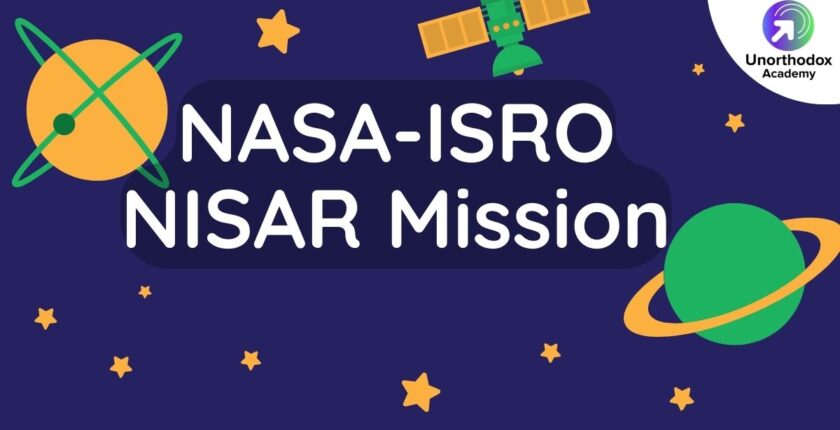New Article
NASA-ISRO NISAR Mission
- February 4, 2023
- Posted by: Admin
- Category: Science and Technology Current Affairs International Current Affairs MPPSC State PSC Exams UPSC

NASA-ISRO NISAR Mission
NISAR is an earth-observing satellite set to launch in 2024. It stands for NASA-ISRO Synthetic Aperture Radar. SAR reconstructs landscapes in two dimensions and three dimensions. NASA and ISRO collaborated in the development of NISAR. NISAR recently departed for India from the California-based Jet Propulsion Laboratory of NASA.
Mission Statement for NISAR
- To map the earth
- Monitor water, agriculture, and forest
- Observe land and ice covers
Why is NISAR making the news?
The NISAR mission will last three years. The NISAR satellite was created in part in the United States. Currently, this partial payload is being shipped from JPL in California to India’s U R Rao Satellite Center in Bengaluru.
NISAR radar systems
L-Band SAR: Developed by NASA’s JPL; Wavelength: 23 cm; Better penetration of forested areas
S-Band SAR: Designed and developed by ISRO; Wavelength: 12 cm; Used for detecting birds and extreme weather events
What NISAR will study?
The NISAR will study the following:
- Antarctica’s cryosphere: The cryosphere is the region of the planet where solidified water can be found.
- Monitoring of ice masses will occur four to six times each month.
- Monitoring ecosystem disturbances
- Natural calamities like earthquakes, landslides, tsunamis, volcanoes, etc.
- Collapse of the ice sheets
Read More: MPPSC Free Study Material (English/Hindi)
🤩Follow Our Social Media Handles
YouTube 👉 https://bit.ly/36wAy17
Telegram👉 https://bit.ly/3sZTLzD
Facebook 👉 https://bit.ly/3sdKwN0
Daily Current Affairs Quiz for UPSC, MPSC, BPSC, and UPPSC: Click here
Frequently Asked Questions:
What is Mission NISAR?
NISAR is a joint Earth-observing mission between NASA and the Indian Space Research Organization (ISRO). NASA and ISRO are providing two radars that are optimized each in their own way to allow the mission to observe a wider range of changes than either one alone.
What are the benefits of NISAR?
NISAR’s data can help people worldwide better manage natural resources and hazards, as well as providing information for scientists to better understand the effects and pace of climate change. The images will be detailed enough to show local changes and broad enough to measure regional trends.
What are the two space agencies for NISAR?
NASA and ISRO signed a partnership to collaborate on and launch NISAR. The mission is targeted to launch in 2024. NASA is providing the mission’s L-band synthetic aperture radar, a high-rate communication subsystem for science data, GPS receivers, a solid-state recorder and payload data subsystem.

